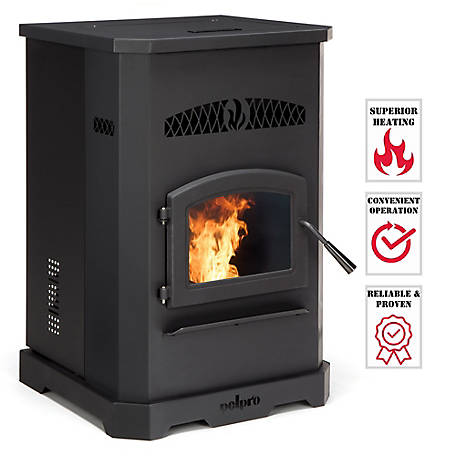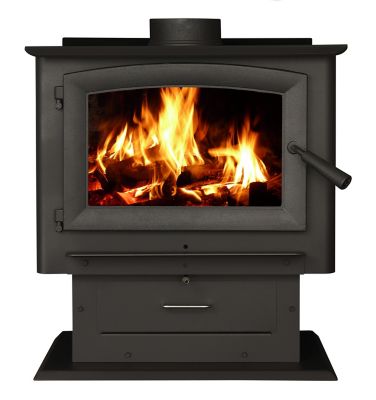PelPro Cast-Iron Pellet Stove, PP130-B
Ensure superior heating when you add this pellet stove to your space. The PelPro PP130-B Cast-Iron Pellet Stove heats more square footage of your home or shop and burns 3x cleaner. Mobile-home approved, this pellet stove boasts 130 lb. of hopper capacity. Complete with a 265 CFM speed blower, this pellet stove means business.
Ensure superior heating when you add this pellet stove to your space. The PelPro PP130-B Cast-Iron Pellet Stove heats more square footage of your home or shop and burns 3x cleaner. Mobile-home approved, this pellet stove boasts 130 lb. of hopper capacity. Complete with a 265 CFM speed blower, this pellet stove means business.
- PelPro pellet stove offers 50,000 BTU input and 40,600 BTU output
- More heat: EPA Certified 58% more heat output than the competition
- Pellet stove offers 130 pounds of hopper capacity for up to 3.5 days between fuel loads
- Automatic ignition and intuitive dial thermostat for easy, comfortable heat
- Reliable pellet stove heats up to 2,500 square feet
- Powerful 265 CFM variable-speed blower to distribute the heat
- Mobile home-approved pellet stove with included fresh air intake
- Proven, easy-to-use design
- 1 year parts warranty; Lifetime toll-free phone support
Additional information
| Product Weight | 240 |
|---|---|
| Product Length | 22.75 in. |
| Warranty | 1 Year Parts, Lifetime Phone Support |
| Capacity | 130 lb. of Wood Pellets |
| Coverage Area | 2,500 sq. ft. |



by Jason
If you have heat your house with a wood stove you will understand, less work.
by Gemini
Stove works excellent and throws off great heat. very easy to operate.
by Roger
This is a great stove that is easy to clean out with an ash vacuum. The blower fan is super quiet and it puts out a lot of heat. Our house is boxy and about 1300 sq ft and it works well. Only change would be to add adjustable louvers to the air blower vents so it can be directed more efficiently.